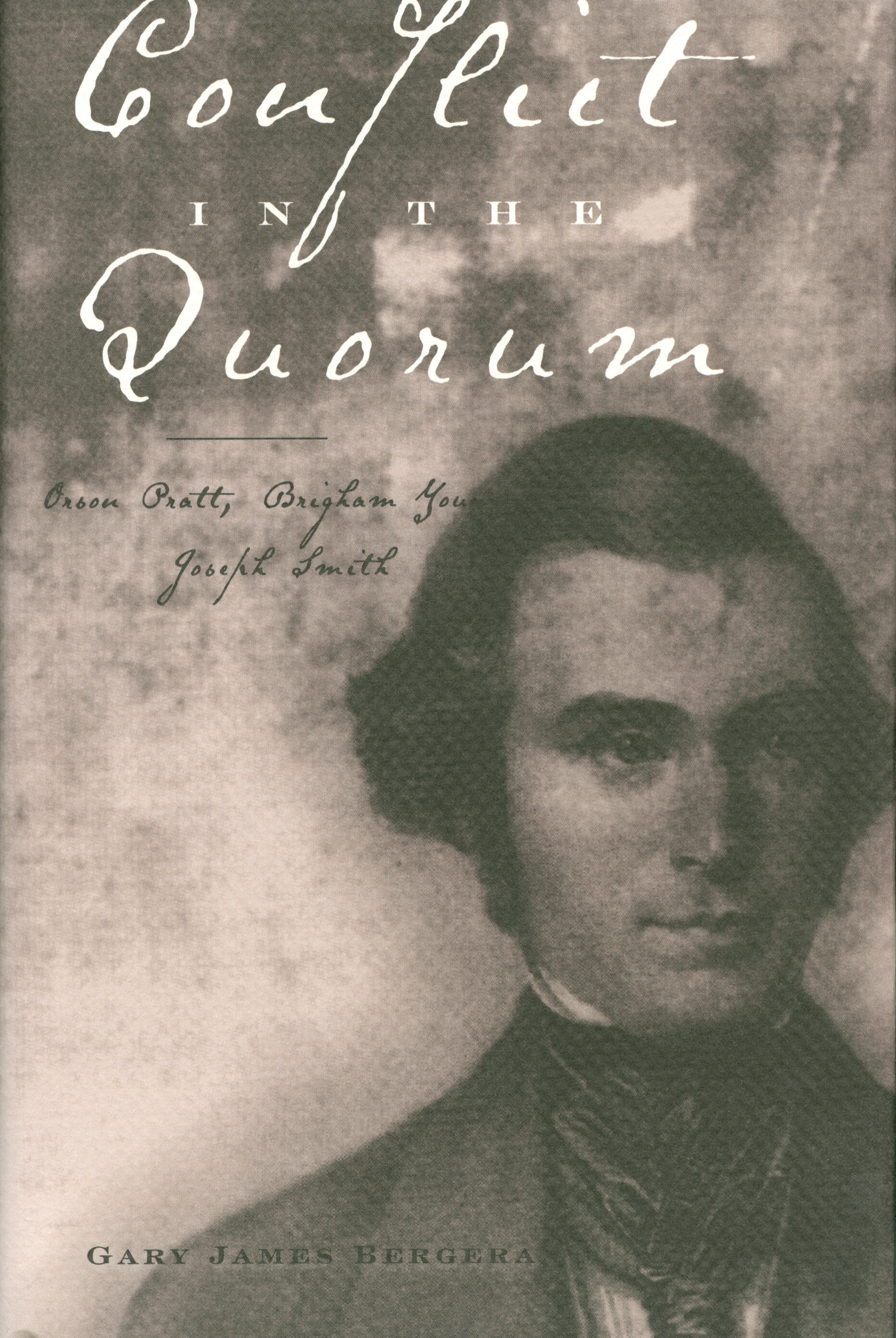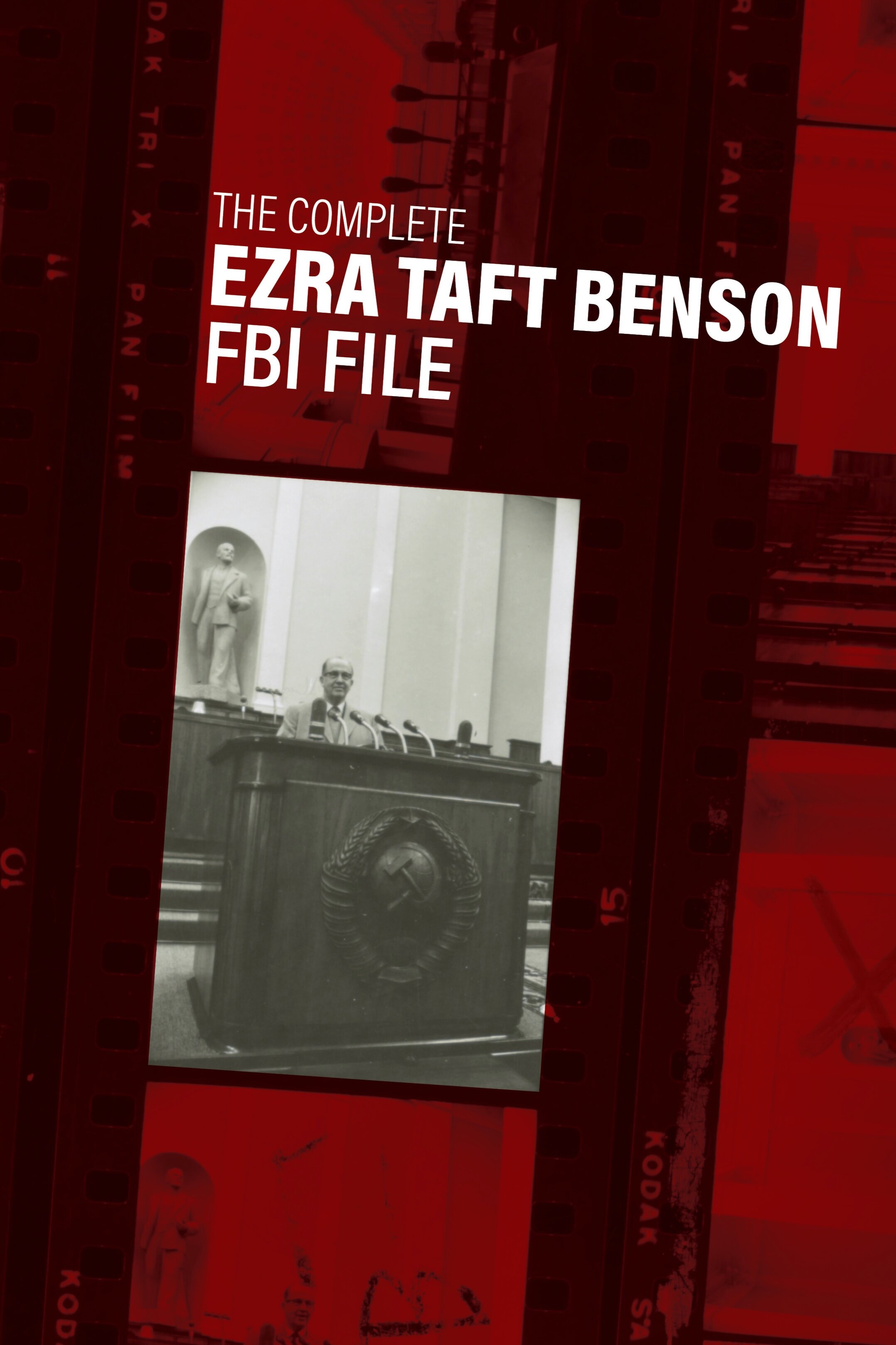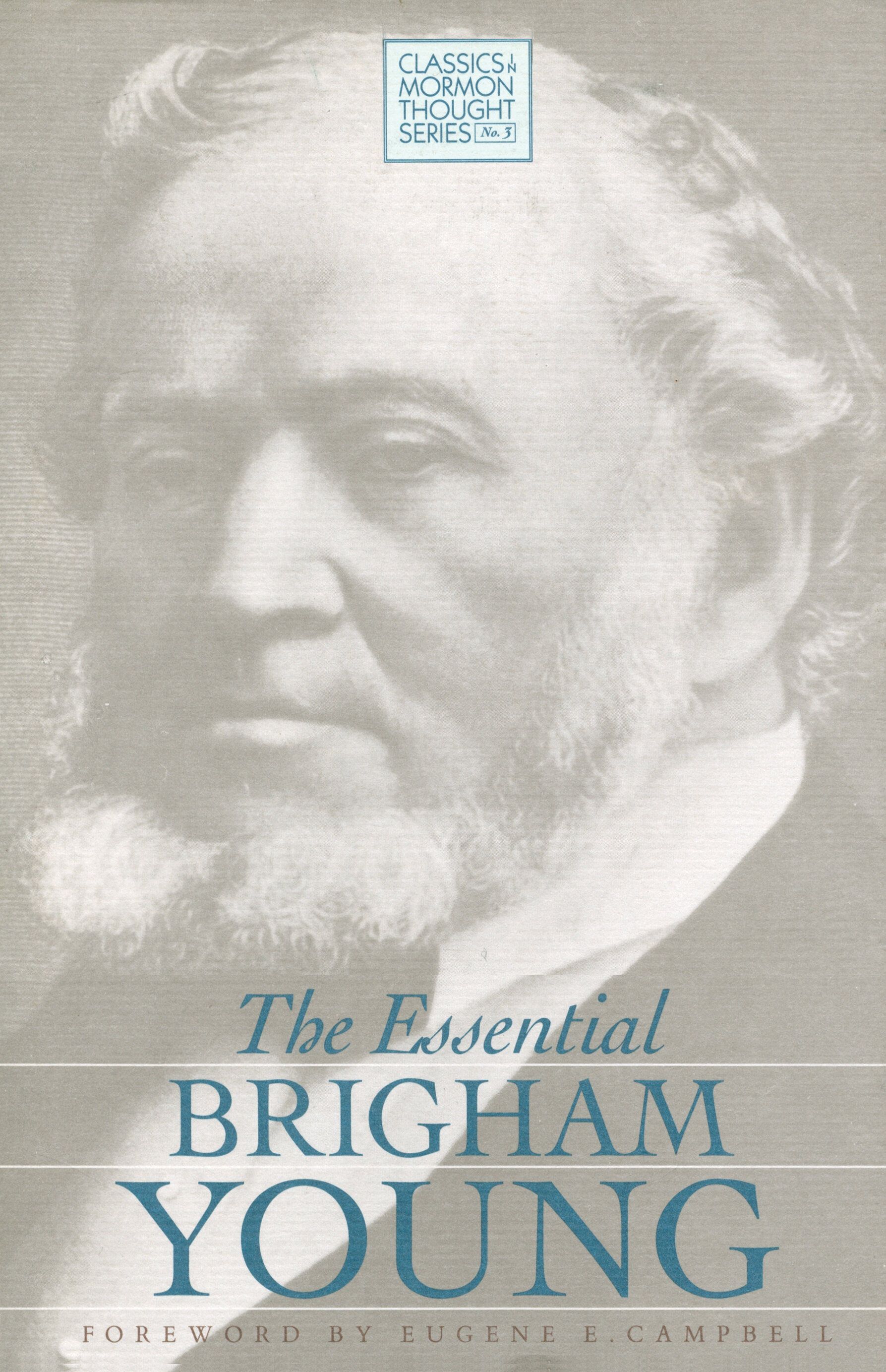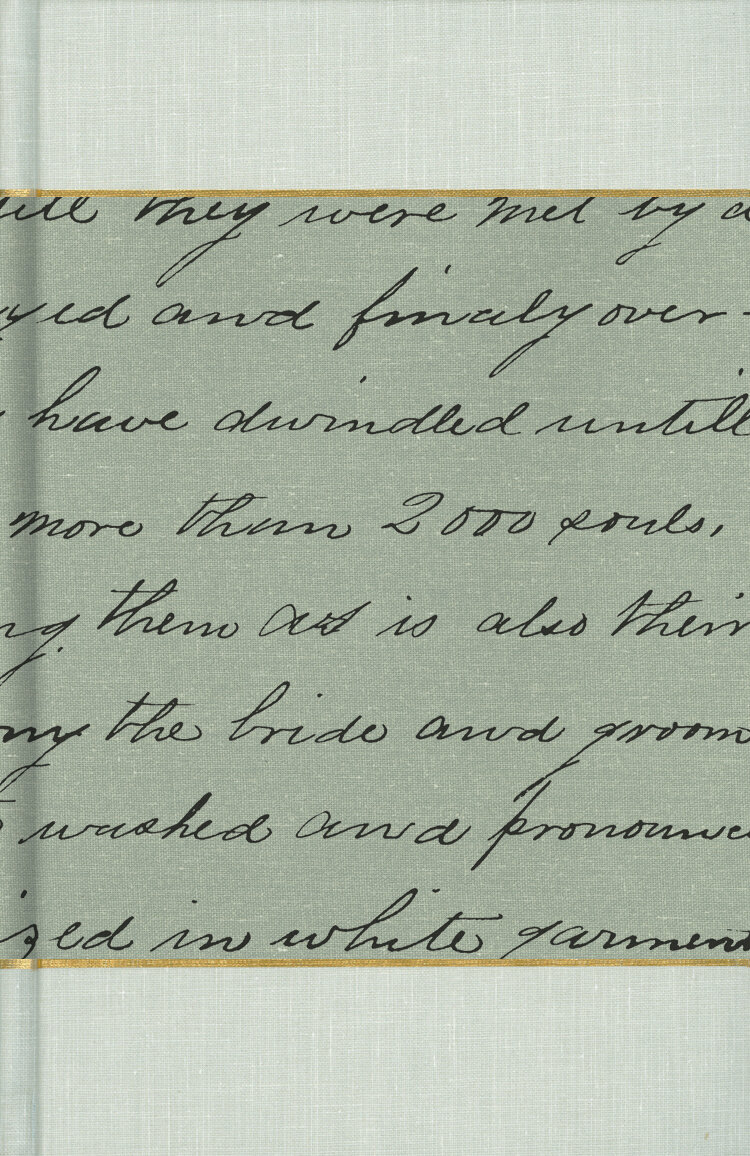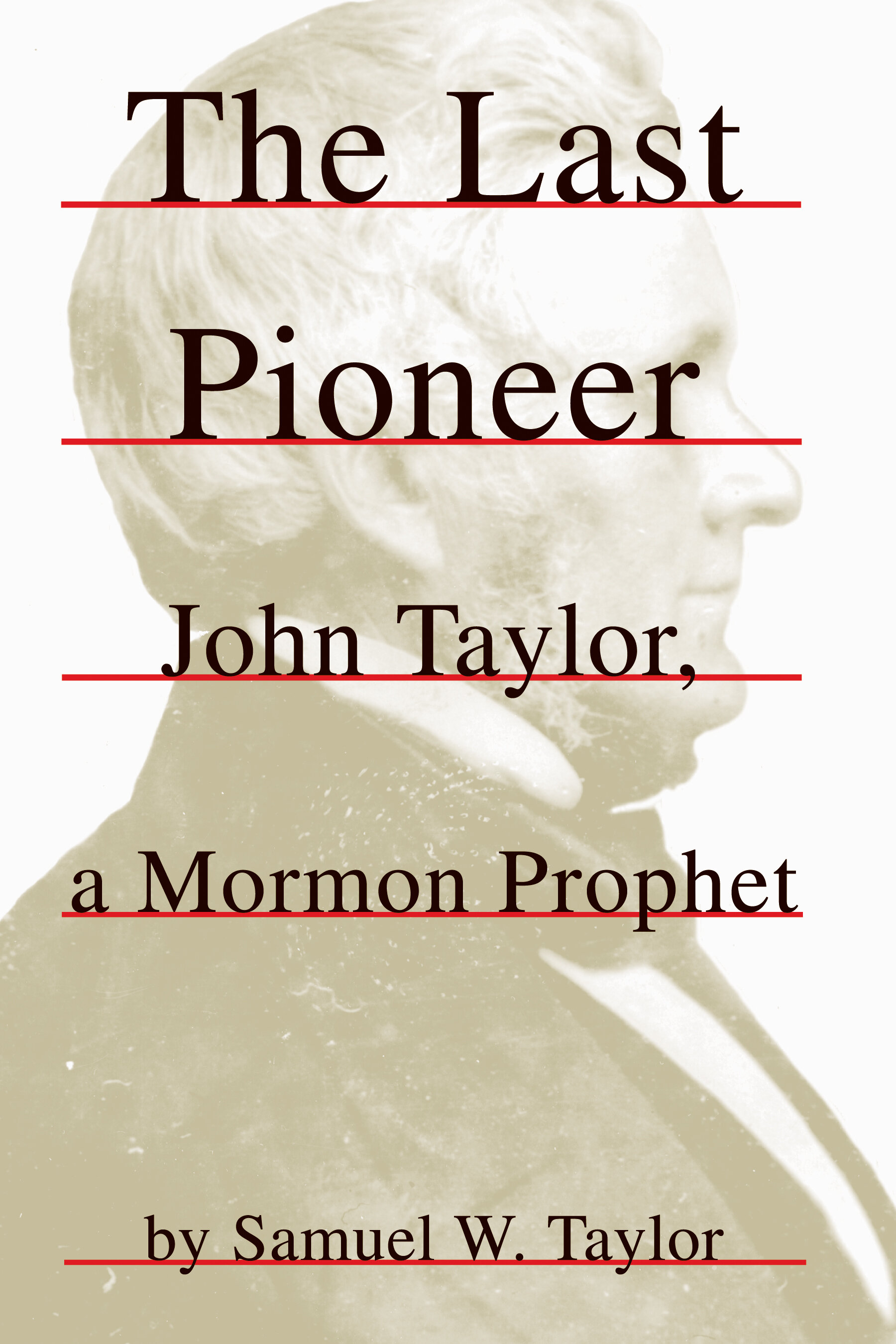The William E. McLellin Papers
The William E. McLellin Papers, 1854–1880
edited by Stan Larson and Samuel J. Passey
The LDS hierarchy was divided in 1837 over the militarization of the church in Missouri. Many in the leadership eventually reconciled, but one of the twelve apostles, William E. McLellin, became what might be termed a friendly critic. He retained his belief in the divinity of the Book of Mormon and kept in contact with former colleagues in the Quorum of the Twelve but could not support the new policies and directions. He resigned from the quorum in 1836 and was excommunicated in 1838.
Most interesting for readers may be McLellin’s observations about how the church changed during his separation. McLellin said that in his five years of activity in the church, he never once heard of Joseph Smith’s First Vision. Available historical evidence confirms that the First Vision was not known in the church until the 1840s, after McLellin’s departure.
McLellin wrote further: “I heard Joseph [Smith] tell his experience of his ordination and the organization of the church probably more than twenty times to persons who, near the rise of the church, wished to know and hear about it. I never heard of Moroni, John [the Baptist], or Peter, James, and John.” McLellin believed that angels had visited Joseph Smith but not that human beings could become angels—a teaching not yet current in the 1830s—or that priesthood authority could be conveyed in that way.
In addition, McLellin wrote of his disappointment in attending the Kirtland, Ohio, temple dedication in 1836 and not seeing angels, as he had hoped. The narrative regarding the appearance of Elijah and others in the temple would not be publicized until 1852. In many ways documented by McLellin, it was a much different church in the 1830s. McLellin illuminates what it meant to be LDS when the emphasis was on Christ’s imminent return to earth; the gathering to Independence, Missouri; revelation through seer stones; and gifts of the Spirit—all of which McLellin continued to promote as beliefs of a true follower of Christ in the last days.
hardback: $39.95
The William E. McLellin Papers, 1854–1880
edited by Stan Larson and Samuel J. Passey
The LDS hierarchy was divided in 1837 over the militarization of the church in Missouri. Many in the leadership eventually reconciled, but one of the twelve apostles, William E. McLellin, became what might be termed a friendly critic. He retained his belief in the divinity of the Book of Mormon and kept in contact with former colleagues in the Quorum of the Twelve but could not support the new policies and directions. He resigned from the quorum in 1836 and was excommunicated in 1838.
Most interesting for readers may be McLellin’s observations about how the church changed during his separation. McLellin said that in his five years of activity in the church, he never once heard of Joseph Smith’s First Vision. Available historical evidence confirms that the First Vision was not known in the church until the 1840s, after McLellin’s departure.
McLellin wrote further: “I heard Joseph [Smith] tell his experience of his ordination and the organization of the church probably more than twenty times to persons who, near the rise of the church, wished to know and hear about it. I never heard of Moroni, John [the Baptist], or Peter, James, and John.” McLellin believed that angels had visited Joseph Smith but not that human beings could become angels—a teaching not yet current in the 1830s—or that priesthood authority could be conveyed in that way.
In addition, McLellin wrote of his disappointment in attending the Kirtland, Ohio, temple dedication in 1836 and not seeing angels, as he had hoped. The narrative regarding the appearance of Elijah and others in the temple would not be publicized until 1852. In many ways documented by McLellin, it was a much different church in the 1830s. McLellin illuminates what it meant to be LDS when the emphasis was on Christ’s imminent return to earth; the gathering to Independence, Missouri; revelation through seer stones; and gifts of the Spirit—all of which McLellin continued to promote as beliefs of a true follower of Christ in the last days.
hardback: $39.95
The William E. McLellin Papers, 1854–1880
edited by Stan Larson and Samuel J. Passey
The LDS hierarchy was divided in 1837 over the militarization of the church in Missouri. Many in the leadership eventually reconciled, but one of the twelve apostles, William E. McLellin, became what might be termed a friendly critic. He retained his belief in the divinity of the Book of Mormon and kept in contact with former colleagues in the Quorum of the Twelve but could not support the new policies and directions. He resigned from the quorum in 1836 and was excommunicated in 1838.
Most interesting for readers may be McLellin’s observations about how the church changed during his separation. McLellin said that in his five years of activity in the church, he never once heard of Joseph Smith’s First Vision. Available historical evidence confirms that the First Vision was not known in the church until the 1840s, after McLellin’s departure.
McLellin wrote further: “I heard Joseph [Smith] tell his experience of his ordination and the organization of the church probably more than twenty times to persons who, near the rise of the church, wished to know and hear about it. I never heard of Moroni, John [the Baptist], or Peter, James, and John.” McLellin believed that angels had visited Joseph Smith but not that human beings could become angels—a teaching not yet current in the 1830s—or that priesthood authority could be conveyed in that way.
In addition, McLellin wrote of his disappointment in attending the Kirtland, Ohio, temple dedication in 1836 and not seeing angels, as he had hoped. The narrative regarding the appearance of Elijah and others in the temple would not be publicized until 1852. In many ways documented by McLellin, it was a much different church in the 1830s. McLellin illuminates what it meant to be LDS when the emphasis was on Christ’s imminent return to earth; the gathering to Independence, Missouri; revelation through seer stones; and gifts of the Spirit—all of which McLellin continued to promote as beliefs of a true follower of Christ in the last days.
hardback: $39.95
Stan Larson is Curator of Manuscripts at the J. Willard Marriott Library, University of Utah. Among his published works are Prisoner for Polygamy: The Memoirs and Letters of Rudger Clawson; Quest for the Gold Plates: Thomas Stuart Ferguson’s Archaeological Search for the Book of Mormon; and Working the Divine Miracle: The Life of Apostle Henry D. Moyle. He holds a PhD in Biblical Studies from the University of Birmingham, England.
Samuel J. Passey is director of the Uintah County Library and Regional History Center, Vernal, Utah. Previously an archivist at the Marriott Library, with degrees from Brigham Young University and the University of North Texas, he is currently part of a six-member task force uniting on-line archival databases as part of the Mountain West Digital Library. He is also editor of the Outlaw Trail Journal.
Documentary History, History
ISBN: 978-1-56085-144-8


